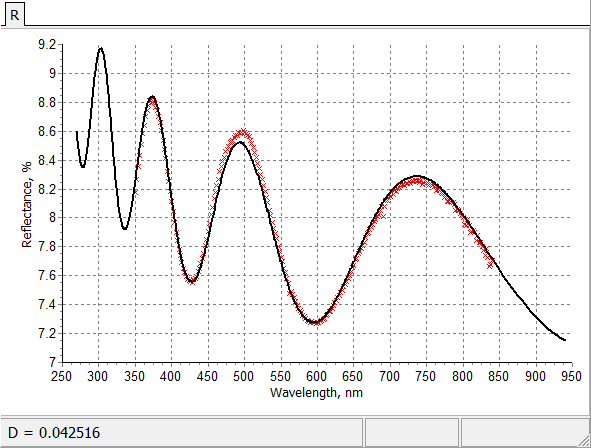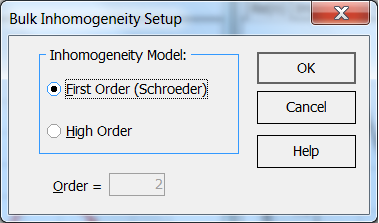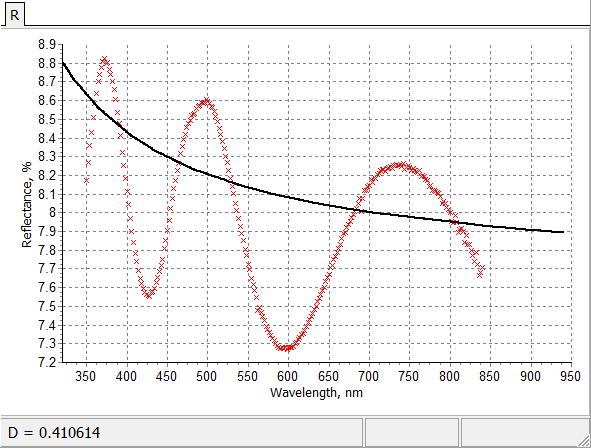| Bulk Inhomogeneity model allows you to find the dependence of optical parameters on the thickness of a thin film. The study of the bulk inhomogeneity in the first, so-called Schroeder’s approximation, allows the determination of the degree of inhomogeneity of a thin film. More exact approximations allow investigating the refractive index profile of a thin film. See more in our publications.
|
Reflectance maxima (red) are shifted upwards from the bare substrate reflectance (black). It is known from the theory that such shifts are typical for thin films featuring bulk inhomogeneity.
|

Intermediate fitting, obtained after application of Cauchy model, is not good, especially in the regions of reflectance maxima. There is nothing strange, because the bulk inhomogeneity was not taken into account. |

Final fitting, obtained after application of thin film model with bulk inhomogeneity. The degree of inhomogeneity is 1.6%. |
References
|
|
OptiLayer provides user-friendly interface and a variety of examples allowing even a beginner to effectively start to design and characterize optical coatings. Read more…
Comprehensive manual in PDF format and e-mail support help you at each step of your work with OptiLayer.
If you are already an experienced user, OptiLayer gives your almost unlimited opportunities in solving all problems arising in design-production chain. Visit our publications page.
Look our video examples at YouTube
OptiLayer videos are available here:
Overview of Design/Analysis options of OptiLayer and overview of Characterization/Reverse Engineering options.
The videos were presented at the joint Agilent/OptiLayer webinar.


